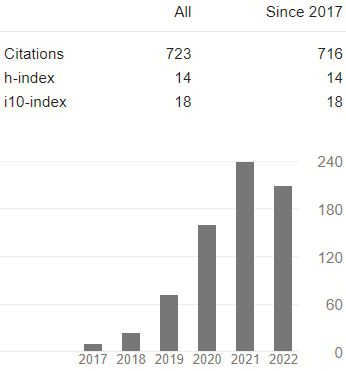ANALISIS PENERIMAAN DAN PENGGUNAAN TEKNOLOGI GOOGLE DRIVE SECARA BERKELANJUTAN PADA MAHASISWA FAKULTAS EKONOMI DAN BISNIS UNIKA ATMA JAYA JAKARTA
DOI:
https://doi.org/10.25170/jara.v10i2.46Keywords:
technology continuance theory, continuance usage, cloud computing, google driveAbstract
The purpose of this research is to know satisfaction and attitude from Fakultas Ekonomi Unika Atma Jaya students using Cloud Computing Technology (Google Drive) and this continuance effect. This research using “Technology Continuance Theory” to evaluate The effect factors for continuance using Google Drive. This research using Non-Probability Sampling and using Questioners for gathering data. Object research is Fakultas Ekonomi Unika Atma Jaya students that using Google Drive. There’s 108 data gathered and processed using SPSS 21. The output for this research shows that Perceived Usefulness and Perceived Ease of Use bring positive effect for Attitude. Confirmation bring positive effect for Satisfaction. Satisfaction and Attitude bring significant effect for Google Drive Continuance Usage Intentions.
References
Jogiyanto. (2007). Sistem informasi keperilakuan. Yogyakarta: Penerbit Andi.
Kaur, K. & Grover, A. (August 2012-July-2013). Technology acceptance: Perception of people towards google plus. A National Journal of Management, 1, 1. Okhla: New Delhi Institution of Management.
King, William R. & Jun He. (2006). A meta-analysis of the Technology Acceptance Model. Science Direct. USA: ELSEVIER.
Khasanah, A.Z. (2011). Mengenal Google Drive Lebih Dalam. http://IlmuKomputer.Com
Liao, C, Palvia, P., and Chen, J-L. (2009) “Information Technology Adoption Behavior Life Cycle: Toward a Technology Continuance Theory (TCT).” International Journal of Information Management. 29(4), pp. 309-320.
Mathieson, K. (1991). Predicting User Intentions: Comparing the Technology Acceptance Model with the Theory of Planned Behavior, Information Systems Research (3:3), pp. 173-191.
Oliver, R. L. (1980). A Cognitive Model for the Antecedents and Consequences of Satisfaction, Journal of Marketing Research (17), pp. 460-469.
Downloads
Published
Issue
Section
License
Authors who publish with this journal agree to the following terms:
- Authors retain copyright and grant the journal right of first publication with the work simultaneously licensed under a Creative Commons Attribution-ShareAlike 4.0 International License that allows others to share the work with an acknowledgment of the work's authorship and initial publication in this journal.
- Authors are able to enter into separate, additional contractual arrangements for the non-exclusive distribution of the journal's published version of the work (e.g., post it to an institutional repository or publish it in a book), with an acknowledgment of its initial publication in this journal.
- Authors are permitted and encouraged to post their work online (e.g., in institutional repositories or on their website) prior to and during the submission process, as it can lead to productive exchanges, as well as earlier and greater citation of published work.














